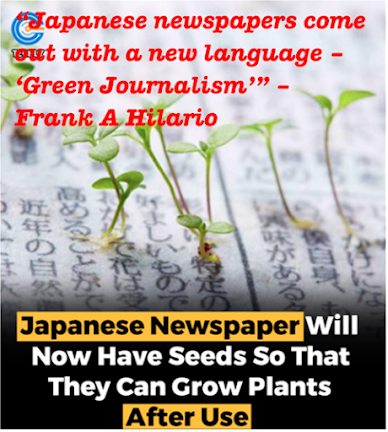Johannes Chua, retiring Section Editor of “Property Living” and “Environment & Sustainability” of Manila Bulletin, is saddened by the multiplication of AI-generated manuscripts in journalism classes and elsewhere. I am not! Definitely. It’s time to teach those students (and teachers) happy journalism! (“Robot hands” from eweek.com, “Steve Jobs” from benfrancia.com)
Mr Chua writes:
The first “red flag” occurred mid-year [2023]. [Earlier], while teaching a part-time class for journalism students (as a way to discover new talents..., I found myself laboring over their works, correcting their bad grammar, wrong tenses, weak leads, etc. Suddenly, in the middle of the term, all students “transformed” into professional writers overnight. When I was checking their midterm papers, I was surprised to read impeccable works with perfectly constructed sentences, valid arguments, and impressive conclusions.
Mr Chua’s beginning journalism students had transformed themselves into “impeccable” journalists! He knew they owed their “works” to the Artificial Intelligence (AI) program called “ChatGPT.” They were cheating, but they thought they could get away with murder!
Mr Chua says:
Of course, I was challenged by the students. One even dared me to use a plagiarism checker. She passed and the plagiarism checker said that she did an “original” piece. Upon closer inspection, I saw that she intentionally misspelled words, changed the order of sentences, etc. The proof that it was ChatGPT[-]generated was the presence of the phrase, “In conclusion” and some peculiar words such as “realm,” “tapestry,” “unfurling,” etc. The way ChatGPT ends an article is also distinct, as I’ve seen its style several times.
So, journalist students are now studying, instead, how to get away with AI journalism? Professors, you can flunk them – but be sure to give them a chance to redeem themselves. Because their “success” is your “failure.”
No Sir! As a self-styled communicator for development, I am not worried. If I were the journalism professor, I would use what I call “THiNK! Journalism” – encouraged by Zig Ziglar – to measure each journalistic piece submitted – and give hints how to improve it:
True is it? If True, is it
Helpful? If Helpful, is it
Inspiring? If Inspiring, is it
Necessary? If Necessary, is it
Kind? THiNK!
Not to me “Truth Journalism,” which is the genre that won for Filipina journalist Maria Ressa the Nobel Peace Prize, 2021.
Journalism students should be taught instead creative thinking – I suggest via the “Po Technique” (read Edward De Bono’s book The Mechanism Of Mind, 1969). When you think of a subject, welcome even negatives – say “Po!” and examine for positives they may be “hiding.” I read that book in 1975; my tens of thousands of blogged essays are testament to Po’s power. Po brought out my genius!
Actually, those ChatGPT journalists are unhappy with what they’re doing. Help them bring out their genius! Teach them creativity, and they will learn what genius Steve Jobs taught the world: “The only way to do great work is to love what you do.”@517














